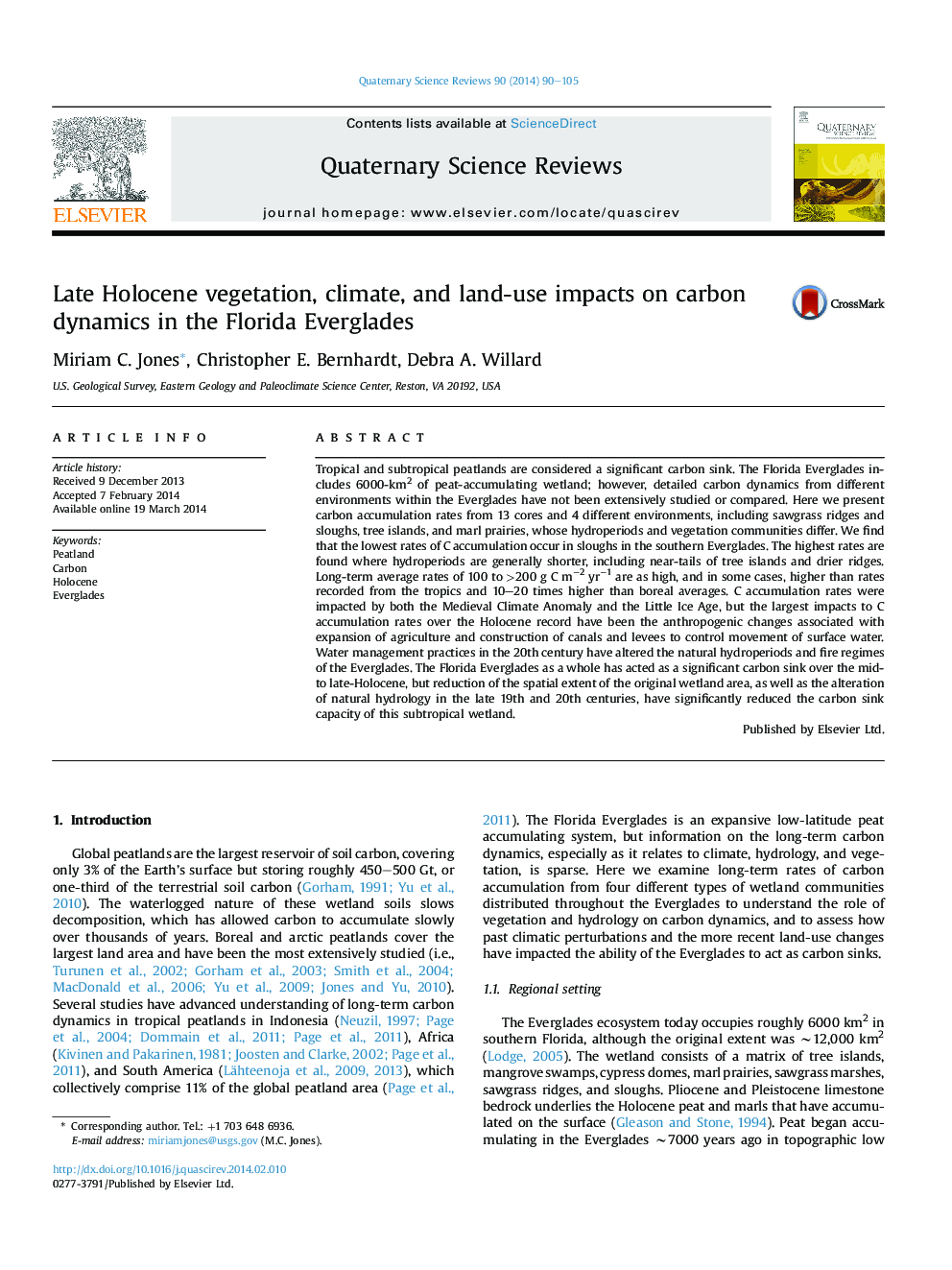| کد مقاله | کد نشریه | سال انتشار | مقاله انگلیسی | نسخه تمام متن |
|---|---|---|---|---|
| 4736550 | 1640844 | 2014 | 16 صفحه PDF | دانلود رایگان |
• Florida Everglades carbon accumulation rates (CAR) are linked to hydroperiod and vegetation.
• Changes in CAR occurred with the onset of the drier Medieval Climate Anomaly.
• 20th century water management had the largest impact on CAR.
• Wilfires increased in ridges and sloughs since the implementation of water management practices.
Tropical and subtropical peatlands are considered a significant carbon sink. The Florida Everglades includes 6000-km2 of peat-accumulating wetland; however, detailed carbon dynamics from different environments within the Everglades have not been extensively studied or compared. Here we present carbon accumulation rates from 13 cores and 4 different environments, including sawgrass ridges and sloughs, tree islands, and marl prairies, whose hydroperiods and vegetation communities differ. We find that the lowest rates of C accumulation occur in sloughs in the southern Everglades. The highest rates are found where hydroperiods are generally shorter, including near-tails of tree islands and drier ridges. Long-term average rates of 100 to >200 g C m−2 yr−1 are as high, and in some cases, higher than rates recorded from the tropics and 10–20 times higher than boreal averages. C accumulation rates were impacted by both the Medieval Climate Anomaly and the Little Ice Age, but the largest impacts to C accumulation rates over the Holocene record have been the anthropogenic changes associated with expansion of agriculture and construction of canals and levees to control movement of surface water. Water management practices in the 20th century have altered the natural hydroperiods and fire regimes of the Everglades. The Florida Everglades as a whole has acted as a significant carbon sink over the mid- to late-Holocene, but reduction of the spatial extent of the original wetland area, as well as the alteration of natural hydrology in the late 19th and 20th centuries, have significantly reduced the carbon sink capacity of this subtropical wetland.
Journal: Quaternary Science Reviews - Volume 90, 15 April 2014, Pages 90–105
